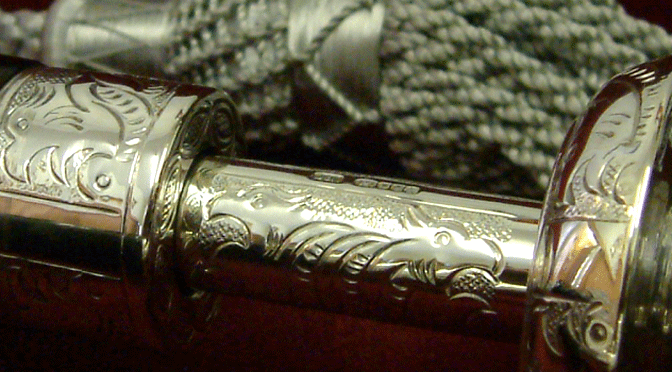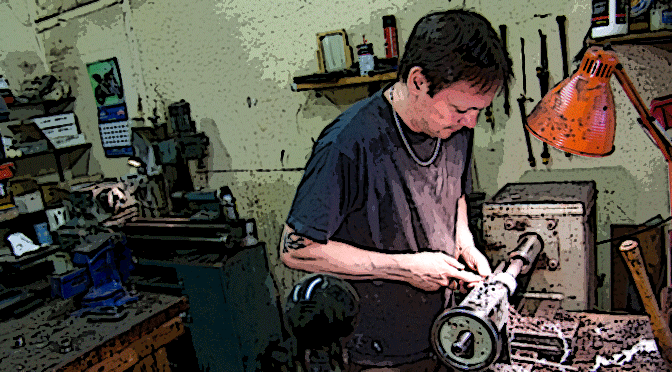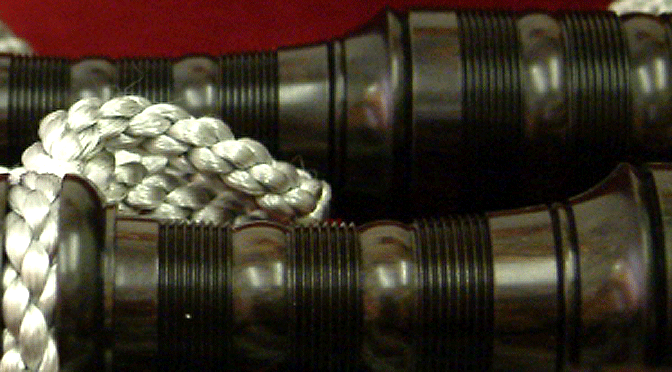
Forget the house or the car. The most important decision a piper has to make is the instrument he buys. Get it wrong and face years of wasteful and expensive plumbing trying to make something out of a very bad situation. Get it right and you can have hours of musical satisfaction from an instrument that is easy to reed, steady, and an all round pleasure to play. In short, a friend for life.
Every piper should play on the very best possible instrument he or she can afford. Sentiment is nice but it is also expensive. If the family bagpipe is the worse for wear don’t persevere for fear of suffering the wrath of your relations; get a new instrument. If you find yourself repeatedly uttering the fateful and telling lines ‘they’re good when they’re going’, get a new instrument.
As you progress up the grades you will more and more realise the bagpipe sound is at least 90% of the battle. A poor pipe and it matters not that you play like Patrick Og MacCrimmon; it still sounds terrible. Conversely the average player with the beautifully toned pipe can turn heads in any company. When the pipe is going well the tuning notes themselves can mesmerise.
What’s more, when you have that sound your confidence grows, you relax, the fingers are lighter on the chanter, the blowing’s steadier; everything improves. For all these reasons spare no time and spend as much as you can afford on getting the best instrument you can.
So how do we determine what a good instrument is? One rule of thumb is this: Is it easy to reed? Invariably when this is the case you can be sure that the pipe has passed the first hurdle. The next thing to look for is steadiness in the drones. After 15 minutes playing do they stay for the length of a piobaireachd, a seven-minute selection or twice through an MSR, or are you constantly stopping to tune?
A fundamentally unsteady set of drones will never go well no matter how good the reeds are that you put in them, or how much time you spend fiddling with the bridles. Check the drone tops. They should tune at the bottom of the hemp on the tuning pins, no lower. It is not always the reed that is at fault. Bass drones in older sets may need a new bottom section to accommodate the modern bagpipe pitch commonly heard on the competition platform. Nowadays it is certainly well over concert Bb.
As far as chanters are concerned these too should be easily reeded too. Test them with a reed you know works well. Listen for a bright and true scale. Test thoroughly in the bagpipe. If in doubt seek a second opinion or consult an expert. Generally speaking, the harder it is to set up a chanter, the more tape you need, the more you need to use the knife on the holes, then the less satisfactory it is going to be. That said chanters do vary tremendously depending on the reeds used in them. Moreover, you’d be hard pressed to find any of the top bands or soloists who haven’t had to tape and cut the holes of their chanters at some time to get that perfect scale and pitch.

So which bagpipe should you go for? Second-hand or new? Everyone wants an old set of silver and/or ivory Lawries, Hendersons, or MacDougalls. No wonder. The majority of the top competitors today play on these instruments. If you come across a set you may be quid’s in. The fact is though, that they are becoming rarer all the time. A bagpipe has a limited shelf life. Anything over 150 years old will probably not be up to the job irrespective of who made it; even less so if the bagpipe in question is one of the lesser sets made by these expert craftsmen of yesteryear. (The set of pipes pictured up top is from 1749 and would clearly not deliver the sound you are after.)

Be very careful therefore when buying a second-hand set. You could be buying someone else’s trouble. Check carefully for cracks. Look for signs of authenticity (even under the cord stops of the drones). If there is silver, have the hallmarking examined by a silversmith. You may get some pointers as to the town of manufacture from that but bear in mind that some sets have had silver added later. This could be a good thing right enough. Only the vain and unknowing would silver up a poor set of sticks.
Look at the combing. It can be like the accelerator pedal on a car. Well worn and you know that the pipe has either been abused or is indeed as old as the seller says it is. Variations can indicate that a particular part has had to be replaced. Don’t get too hung up on brass lined drones either. Bagpipe makers, notably MacDougall of Aberfeldy, inserted these to protect against cracking in the tropics where a pipe with lined drones was still playable. In the UK and other wet climes they can be a condensation nightmare for wet blowers.

Before you finally decide on a set of pipes, try them with reeds you know go well. That way if something is wrong it’s unlikely the reed that’s causing it. Ask if you can get the pipes on approval (you will probably have to offer some security). Take your time with them; listen carefully; get a second opinion. Once you’re happy try a different set of reeds and see if you’re still as happy. Remember that when you’ve handed over the cash there’s no going back.
The advantage of buying new is that you are much less likely to get problems over cracking, distorted drone bores, and loose mounts. Furthermore a new set will probably have been made to accommodate the modern pitch of chanters and require less work and adjusting of drone reeds to get the drone tops well up the tuning pins. The downside is that it may take a few years before a new set matures, and fully develops that smooth sound, that essential balance and depth of harmony heard in some of the very best older sets, and so vital at the highest level of piping performance.
∗ Looking for a new instrument? We can recommend all of the outstanding manufacturers who advertise with Piping Press. Do you hacve a second hand set to sell? Check out our Classified Ads section.




















Recent Comments